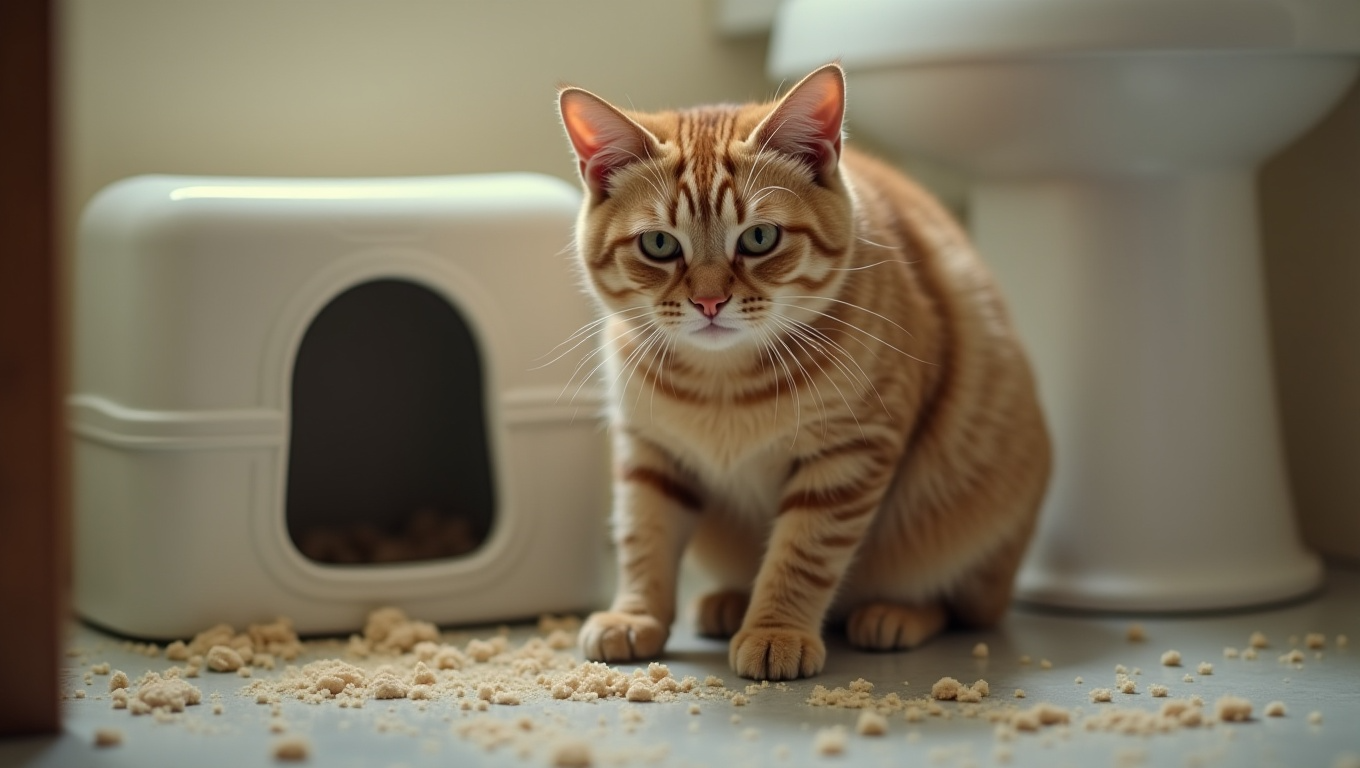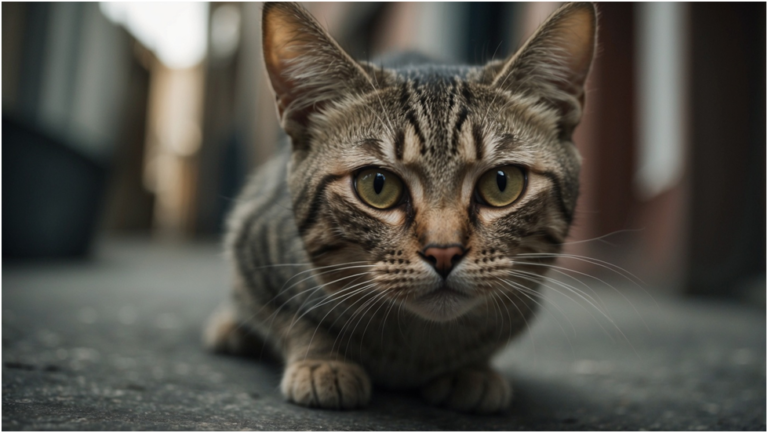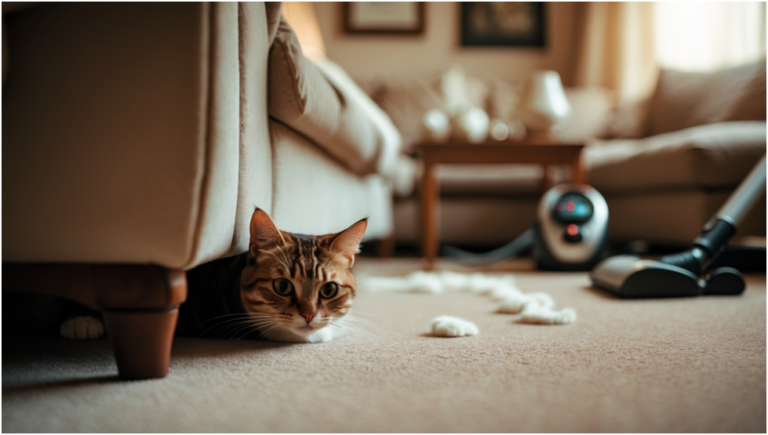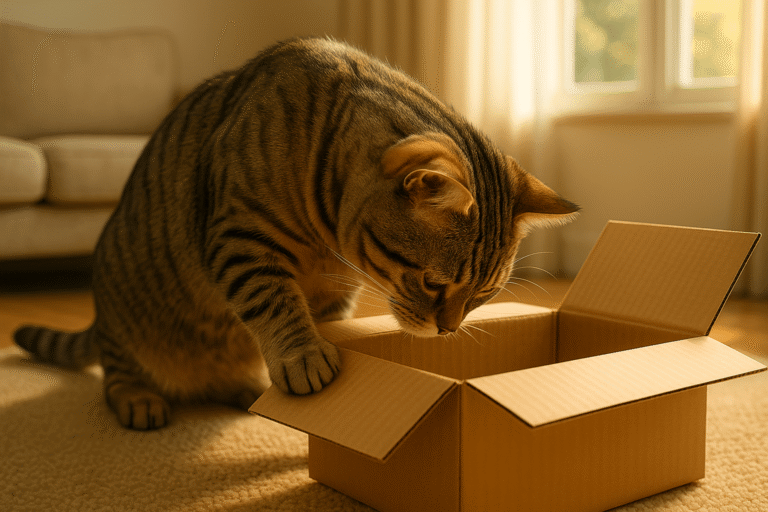Is your cat stopped using the litter box? here are causes, symptoms and solutions
As a cat parent, there’s nothing quite as frustrating as finding that your beloved feline friend has decided to eliminate outside their litter box. Whether it’s your favorite armchair, the bathroom rug, or even your bed, discovering your cat’s mess in places other than the litter box can leave you feeling upset and confused. You’re probably asking yourself, Why has my cat stopped using the litter box? and how can I fix it?”
Well, you’re not alone. Approximately 10% of cats experience this issue at some point in their lives. But don’t worry—this problem is usually solvable, and in this article, we’ll explore the many reasons why your cat may be eliminating outside the litter box and how you can resolve the issue.
Why It’s Critical to Address
If your cat is eliminating outside the litter box, it’s important to address the issue as soon as possible. Not only can this behavior create a mess, but it can also be a sign of underlying medical issues that need to be addressed. Ignoring the problem could lead to a longer-lasting issue, which may worsen over time. Additionally, cleaning up messes constantly can lead to frustration, and if left unchecked, it may strain the bond you share with your cat.
By identifying the root cause of your cat’s behavior, whether it’s health-related, stress-induced, or simply due to a behavioral quirk, you can restore peace and comfort to your home. Let’s dive into the most common causes of inappropriate elimination and, more importantly, how to solve them.
What Is Inappropriate Elimination?
Inappropriate elimination occurs when your cat urinates or defecates outside of its designated litter box. As a cat parent, it’s essential to understand that this behavior is not a form of defiance. Cats don’t eliminate outside their box to punish you—they do it because something is off in their environment. It’s their way of communicating that something isn’t quite right.
How many times a day should a cat use the litter box?
On average, a healthy cat should use the litter box at least once or twice per day, depending on their age and health.
Common Types of Inappropriate Elimination:
Marking:
This is often a territorial behavior where cats use their urine to mark vertical surfaces (think furniture, walls, or doorways). Marking is most commonly seen in unspayed males or cats who are experiencing stress from changes in their environment (new pets, new people, etc.).
House-Soiling:
This occurs when your cat unintentionally eliminates outside the litter box. This can be caused by a variety of issues, from a medical problem to stress or discomfort with the litter box itself.
Common Causes of litter box aversion
The causes of inappropriate elimination are as diverse as the cats themselves. Let’s break down the key causes and how you can pinpoint the problem affecting your feline.
Medical Causes:
If your cat is straining in the litter box, it could be a sign of a medical condition such as a urinary tract infection, bladder stones, or even kidney disease . it’s essential to rule them out first. Always consult your vet to ensure your cat’s health is in check.
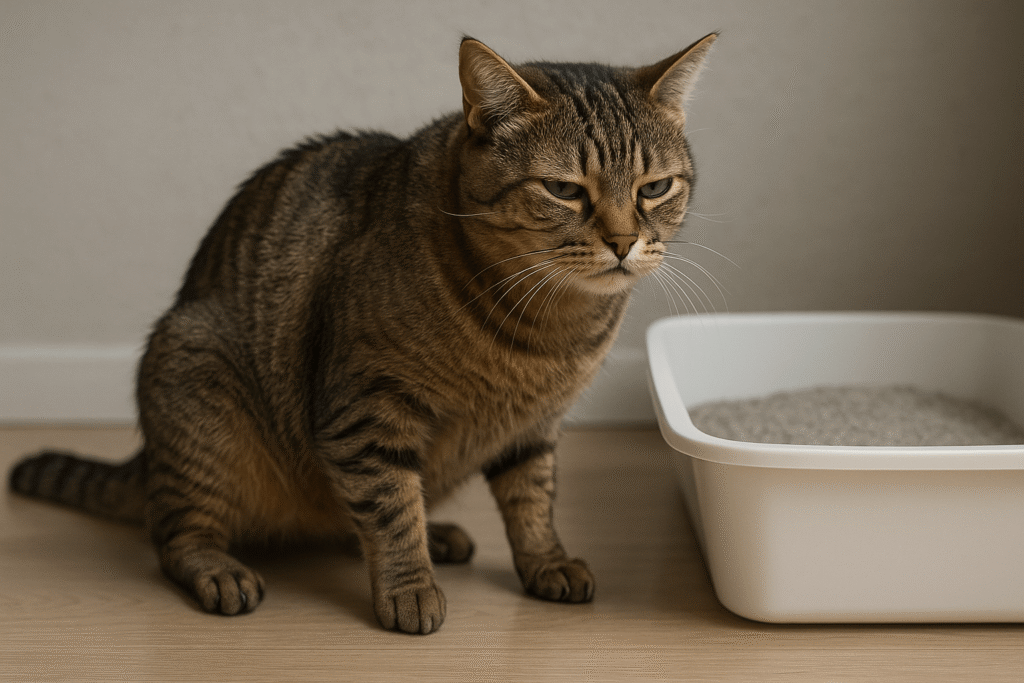
UTI affected cat eliminating outside the littre box
- Urinary Tract Infections (UTIs): UTIs are incredibly painful for cats. When they experience discomfort while urinating, they may seek out alternative places that are easier to access or that they associate with comfort. Keep an eye out for signs like straining to urinate, blood in urine, or excessive licking of the genital area.
- Kidney Disease & Diabetes: Cats with kidney disease or diabetes often urinate more frequently than usual, and sometimes, they can’t make it to the litter box in time. If your cat is drinking a lot more water than usual or urinating excessively, these conditions may be worth exploring.
- Bladder Crystals or Stones: These are painful and can create frequent urination or even urinary blockages. Cats with bladder issues may eliminate in inappropriate areas because it’s simply too painful to use the box.
- Declawed Cats: If your cat has been declawed, they may experience pain or discomfort in their paws, which can make them avoid using their litter box altogether. The pain from the surgery often causes them to avoid scratching in the litter, leading to elimination elsewhere. To address this, try soft paper or wood-based litters like Yesterday’s News.
Behavioral Causes:
Behavioral causes are often stress-related, so pay close attention to your cat’s emotions and how their environment might be affecting them.
- Litter Box Aversion: One of the common reasons behind a cat avoiding their litter box is litter box aversion, where your cat finds the box uncomfortable due to its size, type of litter, or cleanliness. A dirty box, a small box, or a covered box with no room to move around can make your cat feel uncomfortable. If your cat is avoiding their box, try switching to a larger, uncovered box with a litter your cat prefers (see more on this later).
- Stress or Anxiety: Cats are creatures of habit and routine. Anything from a new pet or new family member to moving furniture can throw them off. This disruption can lead to your cat eliminating outside the box. If you’re experiencing major changes, your cat may be acting out to express their anxiety.
- Boredom: A bored cat may eliminate outside the litter box as a form of attention-seeking behavior. If your cat is not getting enough exercise or stimulation, they might start to express themselves through inappropriate elimination.
If your cat isn’t covering their poop, it could be a sign of stress, litter box aversion, or health issues. Some cats prefer not to cover their waste due to a preference for certain textures or discomfort with the litter.
Environmental Causes:
Changes in the home environment can disrupt your cat’s behavior and lead to accidents outside the litter box.
- Changes in Household Dynamics: New people, pets, or even changes in the routine can cause stress for your cat. Cats are highly sensitive to changes and may eliminate outside the box to cope with their anxiety. Avoid sudden disruptions when possible and provide a safe space for your cat.
- Seasonal Changes: When temperatures drop, your cat might prefer a warm corner to eliminate in. Ensure your cat’s litter box is in a comfortable space, especially during colder months when they may not feel comfortable using the box if it’s too cold.
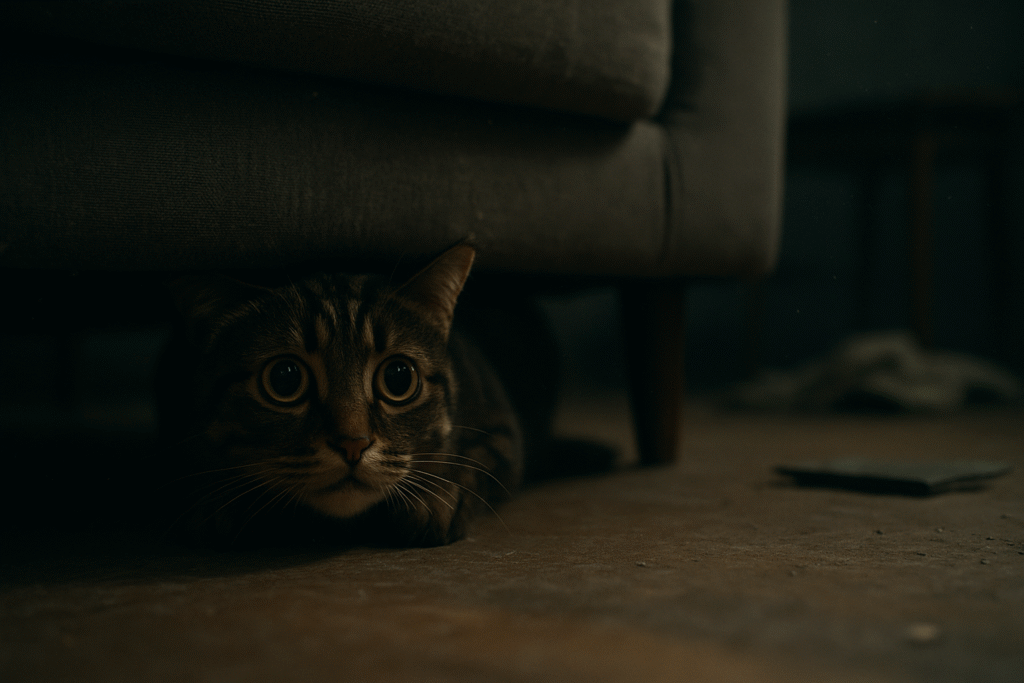
Tabby cat got scared on arrival of strangers in house
If you’re wondering if you can move your cat’s litter box, the answer is yes, but you should do it carefully. Cats are creatures of habit, and moving their litter box can cause confusion or stress
Diagnosing the Root Cause
Diagnosing the root cause of inappropriate elimination is essential to implementing the right solution. Cats can’t verbally tell us what’s bothering them, so it’s up to us as cat parents to carefully observe their behavior, environments, and health to determine why they’re eliminating outside the litter box.
1. Consulting a Veterinarian: The First Step in Diagnosis
If your cat continues to strain in the litter box, it’s important to consult with a vet. Straining can be a clear symptom of a urinary tract infection or bladder obstruction, both of which require immediate attentionIt’s crucial to ensure your cat isn’t suffering from a medical issue like a UTI or kidney disease. and bladder stones. The vet will perform a thorough physical examination and may suggest urinalysis, blood tests, or imaging to rule out any medical conditions that could be contributing to the problem.
If your cat shows signs like straining to urinate, blood in their urine, or frequent attempts to urinate without success, these are strong indicators that you need to seek immediate medical attention. Once medical issues are ruled out or treated, the next step is to explore potential behavioral or environmental causes.
2. Observing Your Cat’s Behavior
Once your cat has been given a clean bill of health, you can begin observing their behavior more closely. Tracking the times and locations where your cat eliminates outside the box can provide critical clues to the problem.
For instance, is your cat consistently eliminating on soft surfaces like bedding or carpets? This could indicate a preference for certain textures. Does your cat eliminate in one particular corner of the room or area of the house? This may suggest that the location of the box or a specific stressor in the environment is influencing the behavior.
To track these patterns, you might want to keep a journal to document when and where the behavior occurs. This will help you identify if the issue is linked to certain times of day, environmental triggers, or a specific area of the home. Recording this information can also help you communicate effectively with your veterinarian if further intervention is needed.
3. Litter Box Assessment: Could the Box Be the Problem?
The next step in diagnosing the cause is to evaluate your cat’s litter box setup. Cats can be very particular about their litter boxes, and even subtle changes can make them feel uncomfortable. Here’s what to consider:
- Box Size: Is the box large enough for your cat? Overweight or older cats may require larger boxes with low sides for easy access. A box that’s too small or difficult to enter can deter your cat from using it.
- Box Type: Some cats prefer open boxes where they can see their surroundings, while others feel more secure in covered boxes. If your cat is using the box less frequently or eliminating near it, consider whether a covered box might be too cramped or causing anxiety.
- Litter Type: Cats are sensitive to the texture and scent of their litter. If you’ve recently changed litter brands, the new scent or texture might be causing discomfort. Try introducing multiple types of litter to see if your cat has a preference.
- Location: Is the litter box in a quiet, private area, away from noise, food, or water? If your cat feels exposed while using the box, they may choose to eliminate elsewhere. Place the box in a spot where your cat feels safe and can use it undisturbed.
4. Investigating Stress Factors in the Environment
Stress is one of the most common behavioral causes of inappropriate elimination. Cats are creatures of habit, and any disruption in their environment can cause anxiety that leads to accidents. Pay attention to any recent changes in your home that might be causing your cat stress:
- New Pets or Family Members: Cats may feel threatened by a new pet or person in the household, especially if the new arrival is taking attention away from them. In multi-cat households, cats may avoid using the litter box if they feel territorial conflict or lack of privacy.
- Changes in Routine: A sudden change in feeding, playtime, or your own daily routine can unsettle your cat. Cats thrive on consistency, and disruptions can lead to stress.
- Environmental Stressors: Loud noises, a new piece of furniture, or even construction noises from outside can cause anxiety. Cats that feel unsafe in their environment may eliminate outside the box to express their discomfort.
By systematically addressing each of these potential causes, you can narrow down the root issue and begin implementing the right solution.
Unique Solutions to Inappropriate Elimination
Now that you’ve diagnosed the cause of your cat’s inappropriate elimination, it’s time to take action. Here are some unique and effective solutions tailored to the underlying cause, whether it’s medical, behavioral, or environmental.
1. Litter Box Management
Ensuring the litter box is appropriately set up is crucial for encouraging your cat to use it regularly. Here’s what you can do:
- Box Placement: Ensure the litter box is located in a quiet, private spot. Avoid placing it near food, water, or noisy areas like laundry rooms or bathrooms. Your cat needs privacy to feel comfortable eliminating.
- Litter Box Size and Type: As mentioned earlier, make sure the box is the right size for your cat. Large cats may prefer a bigger box, while elderly cats may need a low-sided box for easy access. If your cat is declawed or has mobility issues, opt for a soft paper-based or wood shavings litter that’s gentler on their paws.
- Multiple Litter Boxes: In multi-cat households, provide one litter box per cat, plus one extra. Cats sometimes develop preferences for using specific boxes for urination versus defecation, and multiple boxes can help minimize territorial disputes.
- Litter Type: If your cat is refusing to use a new litter box, it can be frustrating. Here’s how to get your cat to use a new litter box: Place the new box in the same location as the old one and gradually introduce it with the same type of litter they were used to. Cats often prefer unscented, clumping litter that’s fine-textured. If your cat is avoiding the box, try experimenting with different types of litter to see which one they like best.
2. Behavioral Solutions
Once the litter box setup is perfect, you’ll need to focus on behavioral solutions to help your cat overcome any psychological or environmental stressors:
- Positive Reinforcement: Reward your cat with treats or praise whenever they use the litter box. This encourages your cat to associate the box with something positive and helps reinforce the behavior.
- Pheromone Products: Products like Feliway diffusers can help reduce stress and anxiety by mimicking natural feline pheromones. These pheromones signal to your cat that they are in a safe and secure environment, which can encourage them to use the litter box again.
- Environmental Enrichment: Cats need mental and physical stimulation to feel secure and relaxed. Interactive toys, scratching posts, and vertical spaces (like cat trees or shelves) give your cat a sense of territorial control and help reduce stress-induced behaviors.
- Not covering poop is not uncommon and can be solved by ensuring that your cat’s litter box is clean, private, and filled with a litter they enjoy. If the problem persists, it could also signal a behavioral or health issue.
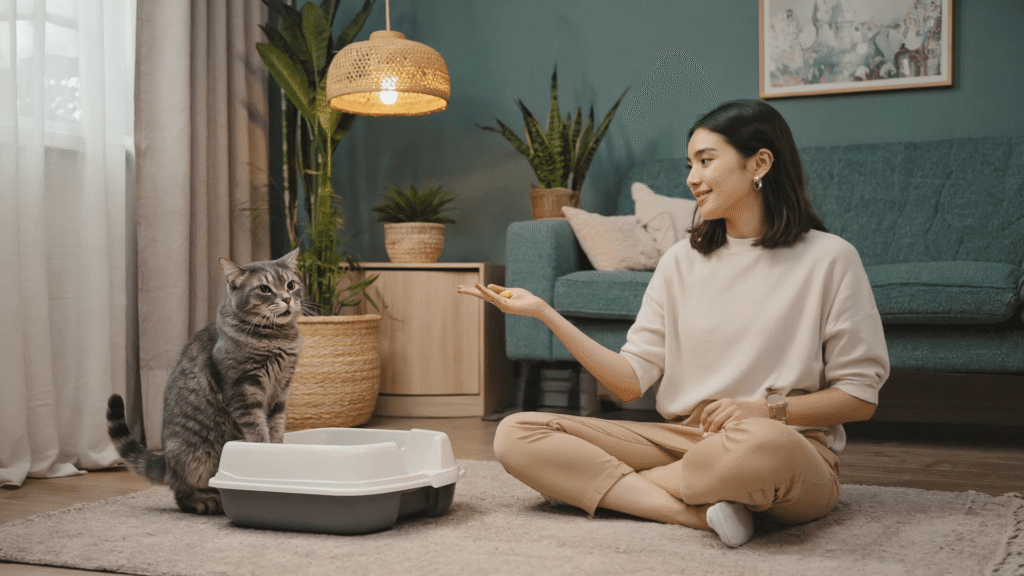
owner praising her fluffy on using littre box
3. Managing Stress and Anxiety
For cats suffering from anxiety or stress, it’s essential to identify the triggers and work to alleviate them:
- Create a Safe Space: Ensure your cat has a designated quiet area where they can retreat and feel safe. This can be a comfortable spot with a soft bed or blanket, away from the hustle and bustle of the household.
- Routine and Consistency: Cats thrive on consistency, so maintaining a regular feeding and play schedule will help your cat feel secure. This is especially important if your cat is experiencing separation anxiety or has had a change in their routine.
- Avoid Punishment: Never punish your cat for eliminating outside the box. Punishment increases stress and can worsen the behavior. Instead, focus on providing a calm environment and rewarding positive behavior.
- Litter box movement: If you’ve recently switched your cat’s litter box, you might be wondering how to get your cat to use a new litter box. Gradually transitioning them to the new box and making sure it’s placed in a calm, private area can encourage them to use it.
Preventing Future Incidents
Once your cat is back on track, the last step is to implement strategies that will help prevent future incidents of inappropriate elimination. Prevention is key to ensuring long-term success.
1. Routine Health Monitoring
If you’re concerned about your cat’s elimination habits, it’s important to consult a vet, especially if you’re wondering how long cats can go without a litter box. It’s crucial to ensure your cat isn’t suffering from a medical issue like a UTI or kidney disease. It’s crucial to detect any potential health issues before they become serious problems. Cats with chronic conditions, such as kidney disease or diabetes, may require ongoing management to avoid accidents outside the litter box.
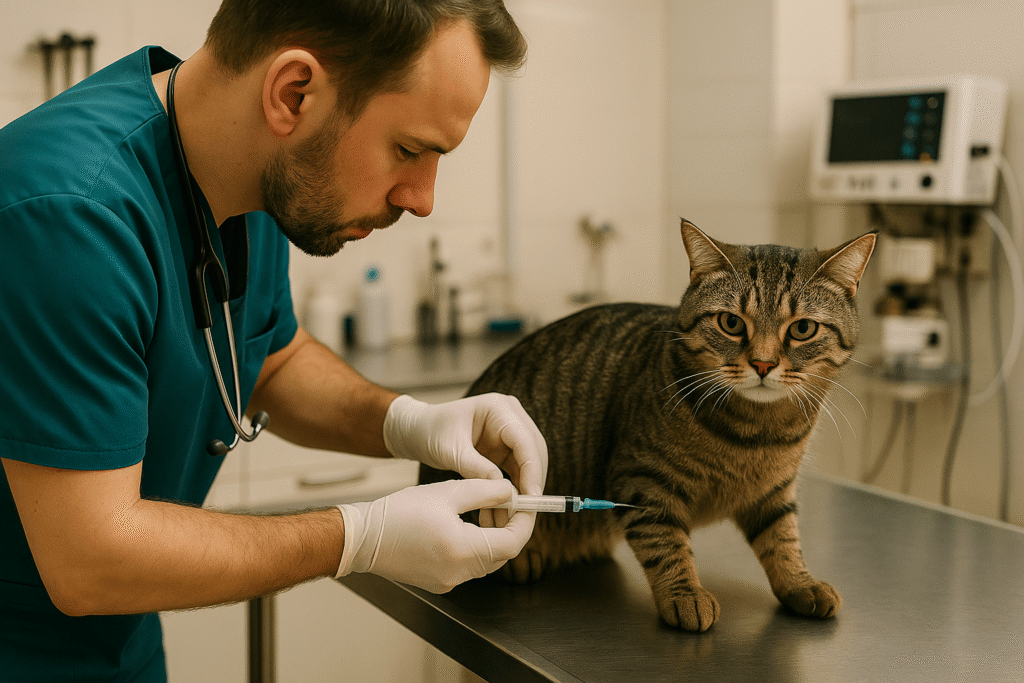
2. Litter Box Hygiene
Keeping the litter box clean is essential to encouraging regular use. Scoop the litter daily and change the litter at least once a week. If the box becomes cracked or retains a persistent odor, replace it with a new one.
3. Maintain a Stress-Free Environment
Stress and anxiety are often triggers for inappropriate elimination, so it’s important to keep your cat’s environment calm and stable. Consider using calming aids like Feliway or lavender diffusers to promote a peaceful atmosphere in your home.
4. Enrichment and Play
Playtime is crucial for reducing boredom and stress. Interactive toys or wand toys provide exercise and mental stimulation, which helps your cat feel more content and less likely to engage in destructive behavior.
5. Behavioral Training
Continue to reinforce positive behavior with treats, praise, and loving attention. This will create a healthy and secure relationship between you and your cat, ensuring they continue to use the litter box as intended. Monitoring your cat’s health is key to preventing issues like straining in the litter box. Ensure regular vet visits and keep track of any unusual behavior that might indicate discomfort.
Understanding how many times a day a cat should use the litter box can help you track their behavior and spot potential health problems early, especially if they start avoiding the box
Conclusion
Inappropriate elimination is a challenging but solvable issue for cat parents. By diagnosing the root cause—whether medical, behavioral, or environmental—and implementing the right solutions, you can restore peace and harmony in your home. Remember, patience and consistency are key, and your cat’s behavior will improve as they feel more comfortable and secure.
By understanding the root cause of your cat’s behavior, you can resolve the issue of why your cat stopped using the litter box and restore peace to your home.

